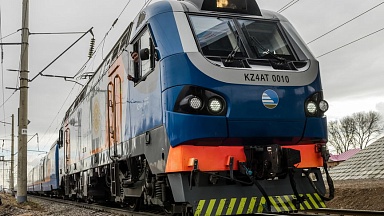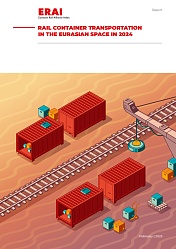Arnhem-based consultants Stec Group presented a market survey and study on the financial and technical feasibility of the terminal in late 2022. The study showed that rail terminal Hessenpoort, as the new site will be called, has an exploitable potential. Before the terminal construction kicks off, what remains is to carry out a social cost-benefit and further research into the infrastructure and the possibilities of obtaining additional volumes and EU subsidies.
The additional studies will cost a total of 100,000 euros. The local government will provide a capital of 40,000 euros, while the municipality of Zwolle is expected to contribute the same amount. A group of six interested companies will contribute the remaining 20,000 euros.
Serving multiple markets
In total, the new terminal in Zwolle could serve 19 weekly trains in the initial phase of its operations. By 2033, this should increase to a total of 44 trains.
The expected volumes are inbound and outbound between Zwolle and Rotterdam, Malmö in Sweden, Herne in Germany, and Poland, with Malmö as the main destination. By 2033, there should be as many as 31 weekly trains between Zwolle and Malmö. Trains between Zwolle and Rotterdam will have the UK as their final destination.
87 million euros for the whole package
According to the researchers, the cost of the rail connection and construction of the terminal, including later expansion, will be over 87 million euros. However, the total expenses could diverge by 30 per cent, either higher or lower than the initial forecast.
The costs of the rail connection to the terminal will exceed 46 million euros, and the government will probably cover them. On the other hand, the terminal’s construction will be covered by the as-yet-unknown terminal operator. Nevertheless, it is possible to apply for a CEF subsidy, which can reimburse up to 30 per cent of the investment and research costs.
Volumes are an issue
Research shows that the terminal will become profitable at the beginning of its third year, when it will be able to transship 100,000 TEUs annually. With the current outlook, the terminal will operate approximately 65,000 TEUs in its initial phase. However, the participating parties have a growth ambition of 20,000 TEUs per year, say the researchers.
By the third operational year, it will be possible to invest more in the site by building two additional sidings and gantry cranes. This way, the terminal will reach 217,000 TEUs of cargo annually. Interested parties must be able to contribute to the total throughput with 165,000 TEUs, but this might not be enough since more volumes will be required to reach the maximum target.
Another option is to expand operational hours from 16 to 24 hours and six to seven days a week. In that case, the terminal’s maximum capacity would grow from 100,000 to 160,000 TEUS, allowing it to handle almost all the expected volumes.
No determined location
Six sites were examined as possible locations for the terminal, out of which three were found suitable. One of the sites does not have space for trains which are 740 metres long. The other locations are far from the current Hessenpoort business and industrial park, which will house the new terminal.
«We cannot yet determine the final location based on this study», said Stec Group. Two options require the waiting track to be fitted in under a viaduct. It is not yet clear whether this is even possible. If this proves impossible for one of these locations, the terminal must move eastwards. For the third option, the possibility of an additional viaduct remains to be investigated. It is also unclear to what extent the Hessenpoort will expand. This needs to be further explored in the new study.




